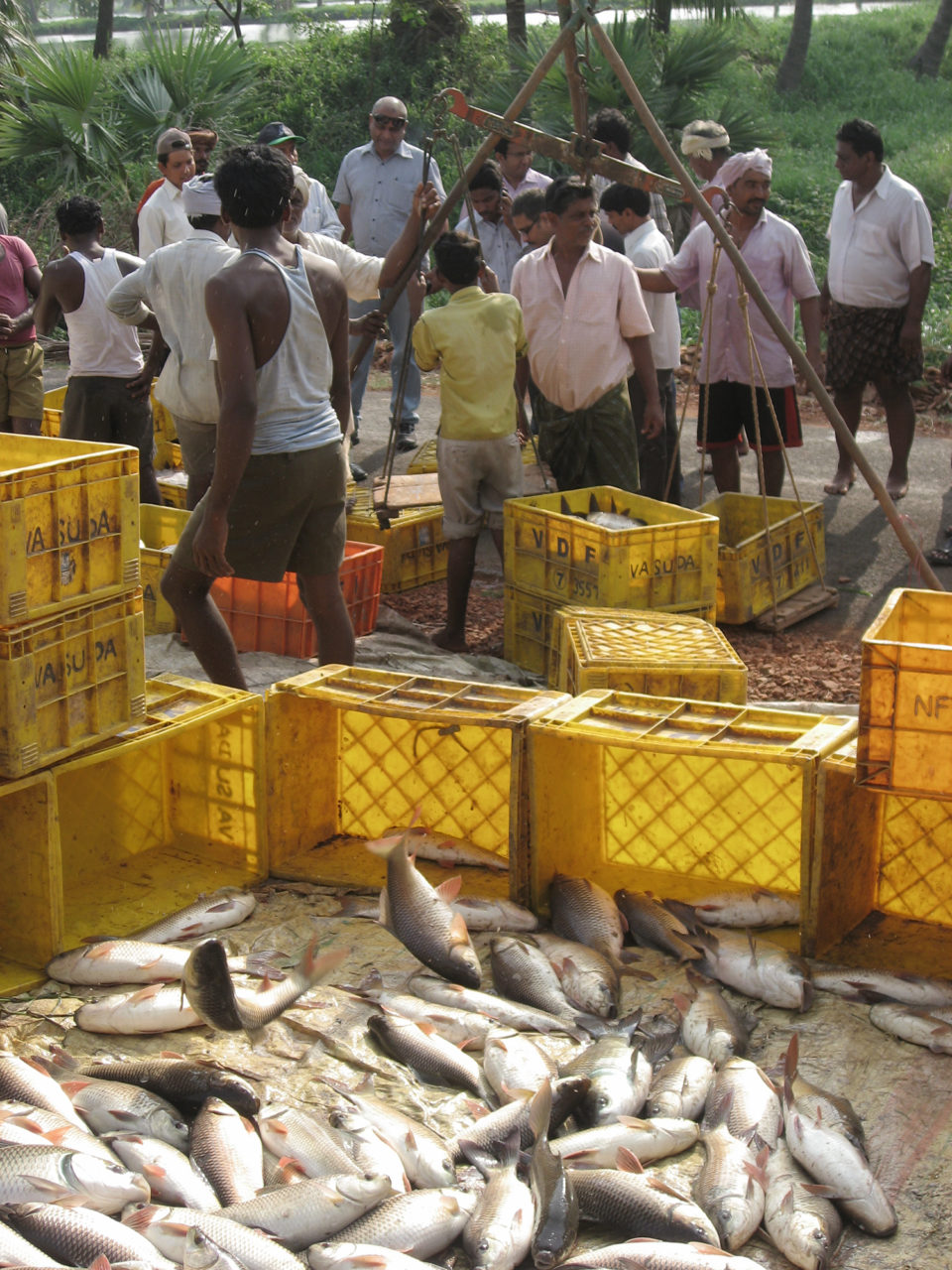![[Commentary] Reinforcing India’s existing legal frameworks to implement the Global Biodiversity Framework](https://news.<span class='tooltipsall tooltip_post_id_1210 classtoolTips1210'>sdgtalks.ai</span>/wp-content/uploads/2023/07/commentary-reinforcing-indias-existing-legal-frameworks-to-implement-the-global-biodiversity-framework.png)
Safeguarding Biodiversity in India: A Pathway for Achieving Sustainable Development Goals
- In the face of increasing urbanisation and the adverse effects of climate change in India, safeguarding biodiversity becomes imperative.
- Actions towards the implementation of the Kunming-Montreal Global Biodiversity Framework (GBF) domestically present an opportunity for India to play a key role as the voice for the Global South and lead by example.
- The proposed amendments to India’s Biological Diversity Act, 2002 and the Forest Conservation Act, 1980 jeopardise the rights of communities and India’s progress towards biodiversity and climate goals.
- Views in this commentary are that of the authors.
The Importance of Biodiversity Conservation
The loss of biodiversity coupled with climate change and rising pollution is placing us on the brink of a planetary collapse. In India, the severity can be seen in our growing climate vulnerability – unbreathable air, declining water availability, sweltering heat waves, and wet bulb temperatures are testing human survival. Biodiversity is our “natural defense” against climate change, which in turn endangers biodiversity, affecting natural systems and the capacity of ecosystems to fulfill their ecological functions. Biodiversity conservation is therefore the key to building water security and climate resilience.
The Kunming-Montreal Global Biodiversity Framework
At COP15, the UN Convention on Biological Diversity, a landmark Kunming-Montreal Global Biodiversity Framework (GBF) was launched, replacing the Aichi Targets. The 30×30 target, referred to as Targets 2 and 3 of the GBF, seeks to restore 30% of land and 30% of seas globally by 2030, while protecting the rights of indigenous peoples. Currently, only 17% of land and 8% of marine areas are legally protected worldwide.
As a signatory to the framework, India played a significant role at the COP in placing the principles of equity and historical emissions at the forefront. India advocated for the Resource Mobilization Mechanism and support for developing nations, as well as emphasized the interconnections between biodiversity loss and climate change. India also highlighted the need to use an “integrated ecosystem-based approach” for protecting biodiversity.
Implementing the Global Biodiversity Framework in India
India is a pioneer when it comes to legal protection of environment, forests, and biodiversity. The Biological Diversity Act (BDA), 2002 serves as an umbrella legislation in India for protecting the country’s biological resources. The BDA has three primary objectives: conservation of biological diversity, sustainable use of its components, and fair and equitable sharing of the benefits arising out of the use of biological resources and traditional knowledge.
India’s National Forest Policy 1988 set a target of one-third of its geographical area to be under forest and tree cover. Through NDC/climate goals, India has committed to creating an additional 2.5 to 3.0 billion tonnes of CO2 equivalent of carbon sink through forest and tree cover by 2030. The implementation of both these targets will advance the GBF targets as well.
The Global Biodiversity Framework stipulates that gender equality and the rights of indigenous communities must be prioritized when implementing biodiversity targets. The strategy for India’s proposed ecosystems-based approach to achieving the 30×30 goal must include a rights-based and gender-responsive perspective, as well as the active participation of local and forest-dwelling communities. Grasslands, mangroves, wetlands, and peatlands must also be incorporated into the conservation strategy for the 30×30 goal. By doing this, the existing legal mandates of Biodiversity Act, Forest Rights Act, and Forest Conservation Act can be executed effectively. A National Biodiversity Plan accommodating the GBF targets can further streamline the implementation of the 30×30 targets.
Impediments to Implementation
While India’s intentions and global commitments reflect a strong conservatory lens, local implementation is challenged by large-scale deforestation, degradation, rapid urbanization, and industrial development. Proposed amendments to the laws regulating forest conservation and biodiversity contradict India’s international climate and biodiversity goals. These amendments seek to alter the list of forest lands and projects exempt from the Forest Conservation Act, essentially taking away legal protection of certain forest lands. The amendments also violate the statutory provisions under Forest Rights Act, 2006. These proposed changes indicate a worrying trend with far-reaching implications on biodiversity and the displacement of communities that sustain it.
Similarly, the Biological Diversity Amendment Bill, 2021 proposes distressing changes such as decriminalization of offenses under the Biological Diversity Act (BDA), 2002 and sweeping exemptions for Indian medicine systems from equitable benefit sharing. These changes contradict the GBF and BDA that highlight the critical importance of local communities in biodiversity conservation and specifically call for the protection of ecosystems while protecting the rights of local communities.
Need for Stronger Biodiversity Protection in India
India is rapidly urbanizing, and safeguarding our natural biodiversity is crucial for supporting our rising population and its water and climate security needs. Our forests, grasslands, wetlands, peatlands, mangroves, and their biological resources support a variety of ecosystem and livelihood services and help us adapt to climate change and mitigate its effects.
The aim of the biodiversity convention and framework is to halt and reverse the planetary biodiversity loss. If biodiversity protection is not prioritized in development, land use planning, and governance, the country’s natural resources will face an increased burden on our environment and economy.
India must not miss out on the opportunity to take leadership in implementing its commitments locally to create a positive momentum regionally and globally.
Priyanka Bhide is the co-founder and director of Kubernein Initiative, an independent, female-led, geopolitical advisory firm based in Mumbai (India) working to mainstream issues that need greater intellectual capacity and focus. Namrata Kabra is a legal researcher working on environment, gender, and climate change. She is with Kubernein Initiative as Programme Associate, Water & Climate Security.
Banner image: A forest wagtail in Dandeli Tiger Reserve in India. India’s National Forest Policy 1988 set a target of one-third of its geographical area to be under forest and tree cover. Photo by Prajwalkm/Wikimedia Commons.
SDGs, Targets, and Indicators Analysis
1. Which SDGs are addressed or connected to the issues highlighted in the article?
- SDG 13: Climate Action
- SDG 14: Life Below Water
- SDG 15: Life on Land
The article discusses the adverse effects of climate change and the importance of biodiversity conservation in addressing these challenges. It emphasizes the interconnections between climate change and biodiversity loss, highlighting the need for actions to achieve climate and water security. These issues align with SDG 13 (Climate Action), SDG 14 (Life Below Water), and SDG 15 (Life on Land).
2. What specific targets under those SDGs can be identified based on the article’s content?
- Target 13.2: Integrate climate change measures into national policies, strategies, and planning
- Target 14.2: Sustainably manage and protect marine and coastal ecosystems
- Target 15.1: Ensure conservation, restoration, and sustainable use of terrestrial and inland freshwater ecosystems
The article highlights the need for India to implement the Kunming-Montreal Global Biodiversity Framework (GBF) and improve biodiversity protection domestically. By doing so, India can contribute to achieving the targets under SDG 13, SDG 14, and SDG 15 mentioned above.
3. Are there any indicators mentioned or implied in the article that can be used to measure progress towards the identified targets?
- Indicator for Target 13.2: Proportion of countries that have integrated climate change measures into national policies, strategies, and planning
- Indicator for Target 14.2: Proportion of coastal and marine areas that are protected
- Indicator for Target 15.1: Proportion of important sites for terrestrial and freshwater biodiversity that are covered by protected areas
The article does not explicitly mention specific indicators. However, the mentioned targets can be measured using the indicators provided above. These indicators assess the integration of climate change measures, the protection of coastal and marine areas, and the coverage of important biodiversity sites by protected areas.
Table: SDGs, Targets, and Indicators
| SDGs | Targets | Indicators |
|---|---|---|
| SDG 13: Climate Action | Target 13.2: Integrate climate change measures into national policies, strategies, and planning | Proportion of countries that have integrated climate change measures into national policies, strategies, and planning |
| SDG 14: Life Below Water | Target 14.2: Sustainably manage and protect marine and coastal ecosystems | Proportion of coastal and marine areas that are protected |
| SDG 15: Life on Land | Target 15.1: Ensure conservation, restoration, and sustainable use of terrestrial and inland freshwater ecosystems | Proportion of important sites for terrestrial and freshwater biodiversity that are covered by protected areas |
Behold! This splendid article springs forth from the wellspring of knowledge, shaped by a wondrous proprietary AI technology that delved into a vast ocean of data, illuminating the path towards the Sustainable Development Goals. Remember that all rights are reserved by SDG Investors LLC, empowering us to champion progress together.
Source: india.mongabay.com

Join us, as fellow seekers of change, on a transformative journey at https://sdgtalks.ai/welcome, where you can become a member and actively contribute to shaping a brighter future.

![[Commentary] Reinforcing India’s existing legal frameworks to implement the Global Biodiversity Framework [Commentary] Reinforcing India’s existing legal frameworks to implement the Global Biodiversity Framework](https://news.sdgtalks.ai/wp-content/uploads/2023/07/commentary-reinforcing-indias-existing-legal-frameworks-to-implement-the-global-biodiversity-framework.png)





